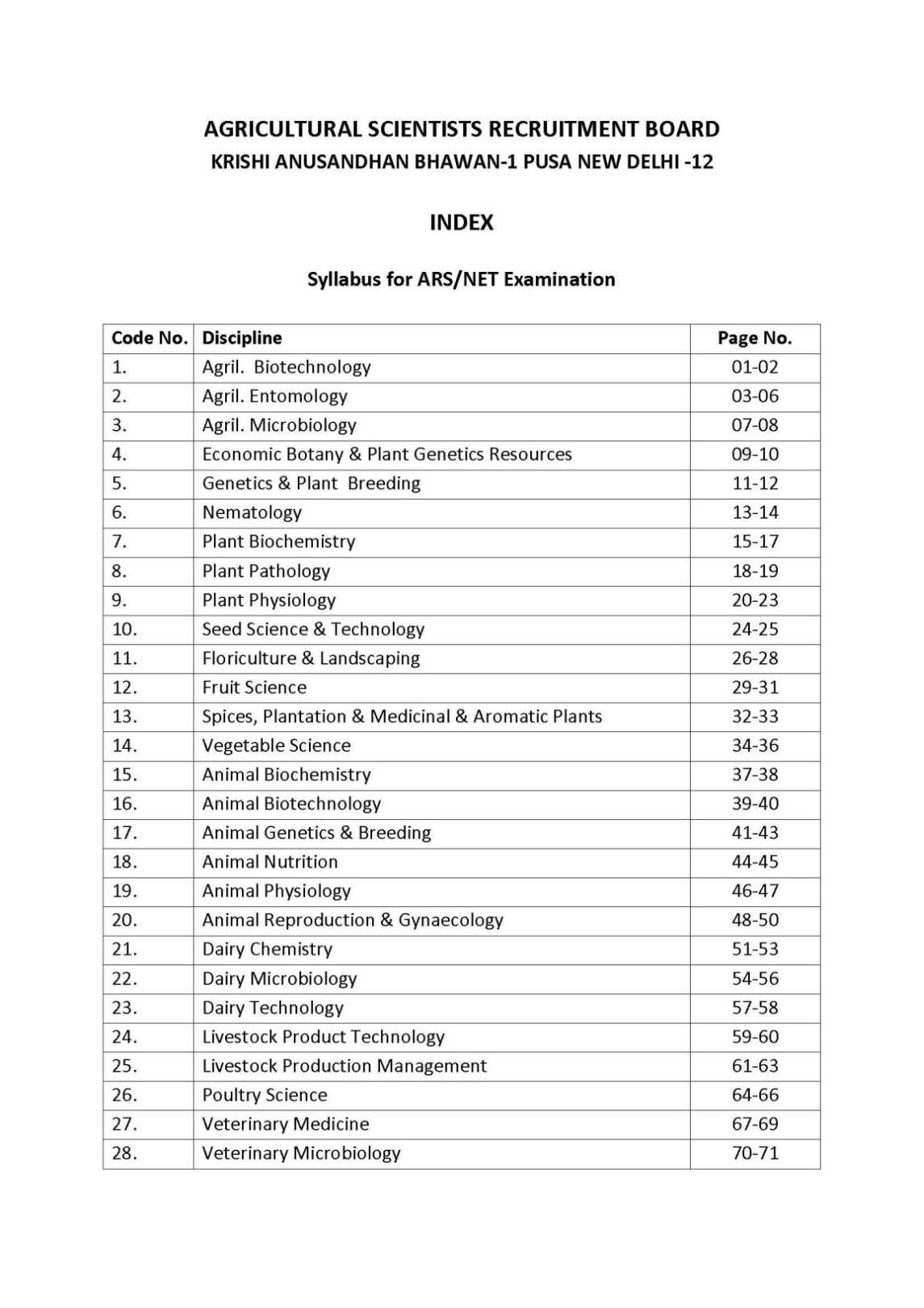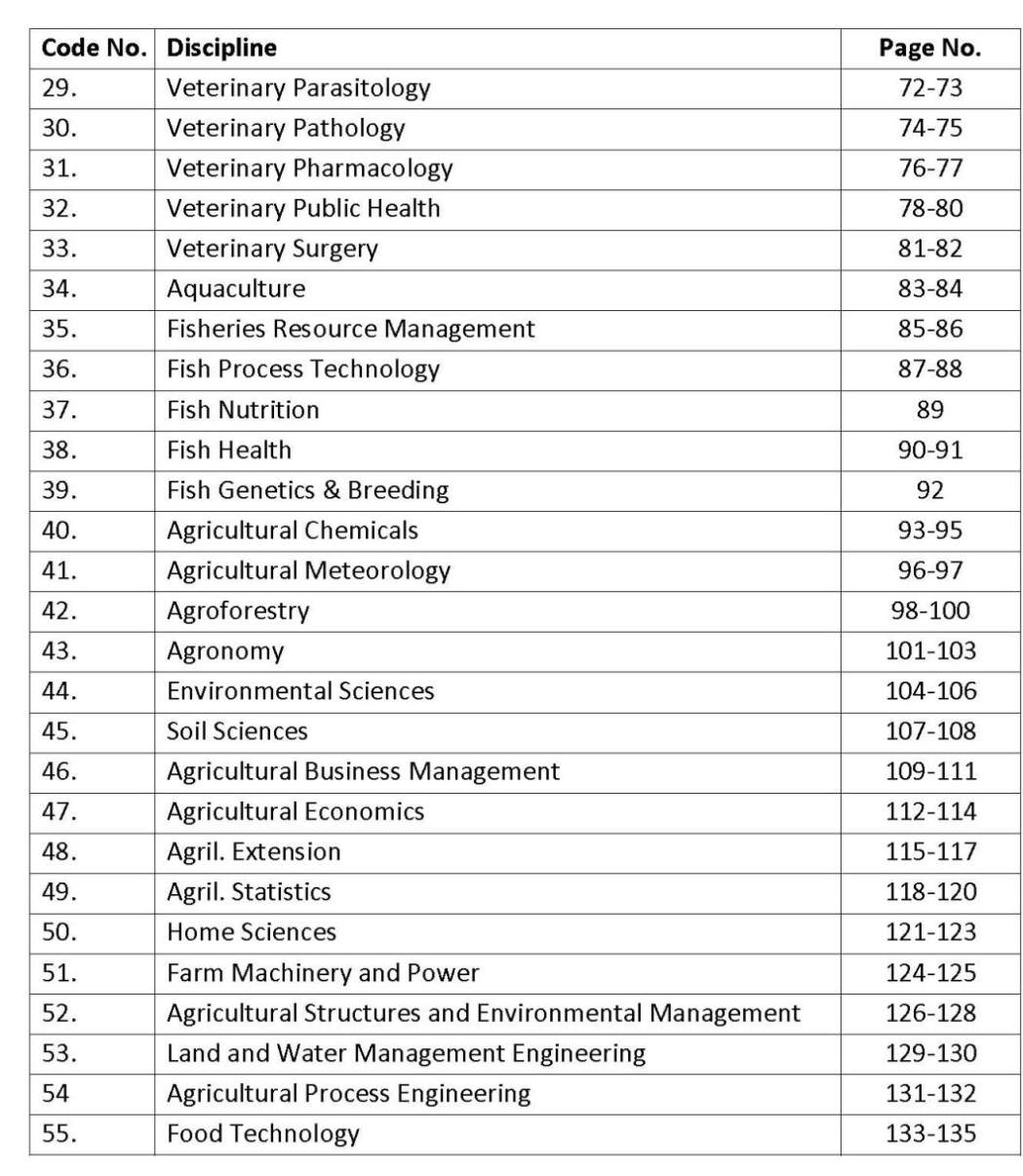|
#2
23rd November 2014, 12:27 PM
| |||
| |||
| Re: Syllabus and Study Matter of ICAR NET Fisheries Science
ARS stands for Agricultural Research Services. ARS conducts NET (National Eligibility test) is held by Agricultural Scientists Recruitment Board (ASRB) on annual base for filling up the job of Scientists in Agricultural Research Service (ARS). Syllabus of Exam for Fisheries Science: Unit 1: Fisheries Resources Major fisheries resources of the world, global trends in production; Target and nontarget fisheries resources of the Indian subcontinent and the EEZ; Distribution, composition, trends and dynamics of major exploited fishery resources in hill streams, rivers, reservoirs, lakes, lagoons, estuaries, territorial waters, oceanic waters, deep sea oceanic islands; Straddling/shared stocks and non-conventional resources; Sports, game and ornamental fisheries; Major commercially exploited stocks, their potentials, status, bionomics, methods of capture and yields; Issues related to capture fisheries; Endangered and threatened species, in-situ and ex-situ conservation; Fisheries and Biodiversity Acts; Juvenile fishing, destructive gears, bycatch and discards; Status and impact of exotic species, accidental introductions; Guidelines and policies for exotics. Unit 2: Fishery Biology Life history of economically important fish species; Food and feeding habits, methods of studying food and feeding habits; Reproductive biology, maturity stages, fecundity, ova diameter studies and breeding cycles; Length- weight relationships; Condition Factor, Gonado-Somatic Index; Age and growth studies - methods for determination of age, study of growth rates, direct and indirect methods; Taxonomy of major fish groups; Recruitment, growth and mortality of fish in natural water bodies; Different analytical and Holistic models for fish stock assessment, their advantages and disadvantages; Catch per unit effort, Concept of Maximum Sustainable Yield and Maximum Economic Yield; Application of remote sensing and Geographical Information System (GIS) in resource mapping and forecasting; Mechanisms, methods and status of fish yield data acquisition, storage, retrieval and processing for national estimates; Ecosystem-based fisheries management tools; Monitoring, control and surveillance (MCS) systems for major fisheries; Computer softwares in stock assessment; Use of Virtual Population Analysis and Predictive models. Unit 3: Aquatic Environment Various aquatic habitats and fish faunal compositions, trophic relationships, distribution and abundance; Fisheries oceanography and marine fisheries; Limnological parameters; Influence of environmental parameters on fish abundance, distribution, resource resilience; Impact of fishing, aquaculture, other anthropogenic activities on the environment and fish stock. Disaster management in fisheries; Methods for increasing productivity of water bodies (Use of thermal energy and deep sea water through artificial upwelling, Use of ranching, Artificial reefs, FADs and their uses); Habitat degradation and its impact on fisheries; Pollution of water bodies and its impact; Bioindicators and Bioremediation; Protected areas (sanctuaries, marine parks, biosphere reserves and Ramsar sites); Potential fishing zones. Unit 4: Fisheries Management Concepts and principles of fisheries management; Fisheries Acts and Legislations, revisions and amendments; Fisheries policies, instruments and mechanisms for inland, coastal and open ocean fisheries management; Management of riverine, reservoir and lacustrine fisheries; Management of marine fisheries; Modes of fisheries management - Open access, regulated, advisory; participatory, user rights; International fishery regulations, treaties and instruments; Input control measures such as access control, size, type, number and power of boats, duration of fishing; Output control measures such as Total Allowable Catch, Catch Quotas, Licensing, Technical control measures such as size limitations, closed fishing areas, closed seasons, size of nets and mesh size regulations, limited entry; Impediments to fisheries governance; UNCLOS, FAO Code of Conduct for Responsible Fisheries; India’s commitment to international treaties and resolutions. Unit 5: Fishing Technology Different types of craft and gear, their operation and their maintenance; Selectivity of fishing gears, by-catch reduction devices in trawls, turtle excluder devices; Use of modern techniques and equipment for fish finding and capturing. Unit 6: Economics and Marketing Supply, demand and price dynamics in the fisheries sector; domestic and export marketing of fish and fish products, trends, channels, mechanisms, regulations, trade and non-trade barriers, concerns and strategies; modern marketing methods and channels, cold chains, storage; value addition; domestic and international market demands; International regulations and practices affecting Indian fisheries trade; WTO and Indian fisheries scenario; Issues in branding and labelling; Quality concerns; Growth of domestic and exports markets; Market trends and diversification; Emerging consumer preferences and trade practices; Fisheries cooperatives; Institutional support for fisheries development. Unit 7: Fisheries Livelihood Relevance of capture fisheries in food, nutrition, employment, income and livelihood securities of fishers; Vulnerability of fishers to changes in resource availability, exploitation and utilization patterns; Marginalization of fishermen, small scale processors and traders due to changing scenarios of product diversification, markets and trade; Impact of dams, river linking, CRZ, Biodiversity Bill, protected/closed area, fishing bans, closed seasons, protected areas, mangroves, sanctuaries and parks on the fisher communities. Land and water body use issues in fisheries. Role of extension in fisheries, mechanisms and modes of extension and their impact on capture fisheries and fisher's livelihood, alternative livelihood options; Management of conflicts within sub-sectors in fisheries; Women in fisheries, status, role, impact, future; Vulnerability of fishers to natural disasters and coping mechanisms in disaster management. Complete Syllabus: If you want to get more detail about syllabus, download this PDF file: Syllabus of ICAR NET Fisheries Science     |